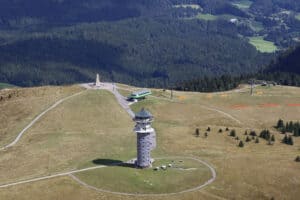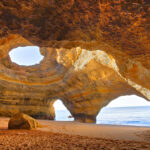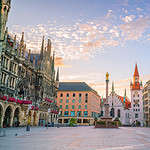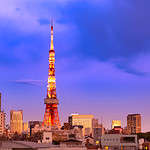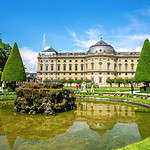Brugge is a perfect blend of incredible history and fairytales in Belgium. Exploring the city through a boat ride and getting drenched with the beauty it holds. This article will take you on a beautiful trip to visit Brugge in Belgium.
With the medieval period preserved to its utmost beauty, a classic and beautiful stream of blue water flows through the city. This city is phenomenal and astounding with a sparkling atmosphere, streets surrounded by gingerbread, and Disneyland houses.
Contents
A Glimpse into Brugge’s History
The captivating city of Brugge, located in the heart of Belgium, offers a rich tapestry of history, culture, and charm. The roots of this city can be traced back to the 9th century when it began as a vital trading center. Over the years, Brugge has become known for its extensive network of canals, which led to its nickname “Venice of the North.”
As you wander through the cobblestone streets, you will be immersed in the city’s well-preserved medieval architecture that has stood the test of time. The historic center of Brugge has been designated as a UNESCO World Heritage Site, a testament to its cultural significance and extraordinary beauty.
Throughout the centuries, Brugge has experienced periods of prosperity and decline. During the 12th century, the city rose to prominence as a major cloth production center, attracting traders from all over Europe. The city’s golden age was the 15th century when the Burgundian court made Brugge their residence, attracting artists and intellectuals, and making it a hub for Flemish art.
However, Brugge’s fortunes began to decline in the 16th century due to the silting of the Zwin River, which hampered trade. The city’s economic downturn continued into the 18th and 19th centuries, and it wasn’t until the 20th century that Brugge started to reinvent itself as a tourist destination.
Today, Brugge’s rich history, breathtaking architecture, and romantic canals make it a must-visit destination for travelers from around the world.

Things to See and Do when visit Brugge
In Brugge, a wide variety of attractions and activities await travelers, ensuring everyone can find something to enjoy. History enthusiasts will be fascinated by the well-preserved medieval buildings, while food lovers can indulge in the diverse culinary offerings, ranging from traditional Belgian dishes to international cuisine.
- The Belfry, a remarkable 13th-century landmark, invites visitors to climb its 366 steps for a breathtaking panoramic view of the city and an up-close encounter with the impressive 47-bell carillon.
- Market Square, the bustling heart of Brugge, allows travelers to immerse themselves in the vibrant atmosphere, savor Belgian waffles at outdoor cafes, and shop for souvenirs at the lively weekly market.
- The Church of Our Lady houses the magnificent Madonna and Child sculpture by Michelangelo, attracting art lovers from around the world.
- The Groeningemuseum showcases an extensive collection of Flemish art, featuring works by renowned painters such as Jan van Eyck and Hans Memling.
- The medieval Basilica of the Holy Blood holds a revered relic believed to contain drops of Jesus Christ’s blood, drawing pilgrims and visitors alike.
- The serene Beguinage, a UNESCO World Heritage site, offers a glimpse into the lives of the beguines, a religious laywomen’s community that thrived in medieval times.
- The picturesque Minnewater Park, also known as the Lake of Love, provides a romantic setting for leisurely strolls, picnics, or boat rides on the peaceful lake.
- The Historium Brugge transports visitors back to the city’s golden age through an interactive, multimedia experience, revealing the history and culture of medieval Brugge.
- The Bruges Beer Experience invites beer enthusiasts to learn about the brewing process, and the history of Belgian beer, and even participate in beer tastings.
- The quaint St. Anna Quarter, a lesser-known district, offers a more authentic experience with its narrow streets, beautiful churches, and charming houses, away from the typical tourist crowds.
With such a wealth of sights and experiences, Brugge is an enchanting destination that caters to a broad audience of travelers.
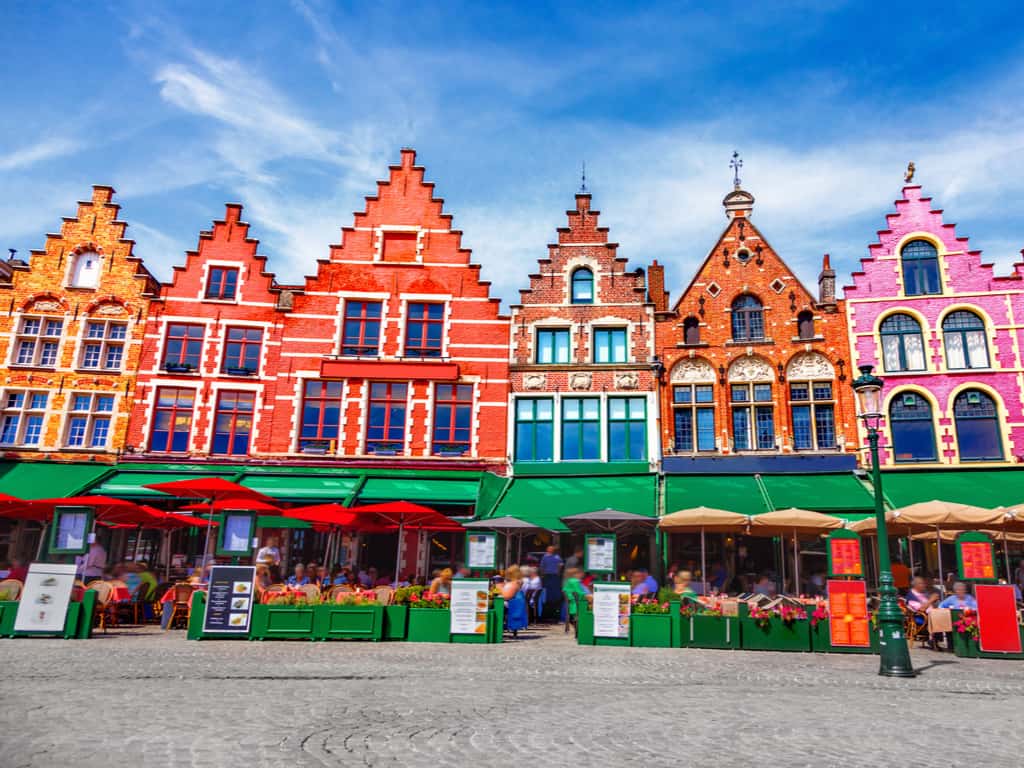
Typical Costs when Visit Brugge
Travelers with various budgets can embrace the magic of Brugge, Belgium, as the city offers options for all wallets. From affordable choices to luxurious experiences, Brugge caters to everyone’s needs. In this section, we’ll delve into the typical costs for accommodations, meals, activities, and transportation, helping you plan and maximize your trip with ease.
Typical Costs in Brugge:
| Category | Budget | Mid-Range | Luxury |
|---|---|---|---|
| Accommodation | €20-€50 | €60-€120 | €150+ |
| Meals | €5-€15 | €16-€35 | €50+ |
| Activities | €0-€10 | €11-€25 | €40+ |
| Transportation | €2-€7 | €8-€15 | €20+ |
In Brugge, travelers can expect a range of costs based on their budget and preferences. For example, budget accommodations such as hostels and guesthouses can range from €20 to €50 per night, while luxury hotels may cost €150 or more. When it comes to dining, a budget meal at a local eatery might cost between €5 and €15, whereas a fine dining experience in a luxury restaurant could start at €50.
Instagram-Worthy Photography Spots
Belgium’s Brugge is a photographer’s dream destination, with its picturesque canals, charming cobblestone streets, and well-preserved medieval architecture. The city offers countless Instagram-worthy spots that will leave your followers in awe.
A classic spot to capture the essence of Brugge is the Rozenhoedkaai, where you can photograph the stunning canal view with the Belfry and historic buildings as a backdrop. The vibrant reflections of the facades on the water make it an alluring scene, particularly at sunrise or sunset.
Another must-visit location for photographers is the Bonifacius Bridge, which offers a breathtaking view of the Church of Our Lady and the peaceful canal below. This quaint bridge is adorned with lush greenery and flowers, making it a perfect romantic setting for your travel photography.
The Markt Square, with its colorful historic buildings and lively atmosphere, provides a fantastic opportunity to capture the spirit of Brugge. The square’s bustling energy, horse-drawn carriages, and local street performers create a captivating ambiance for your photographs.
Windmills have been a part of Brugge’s landscape for centuries, and the Kruisvest Windmills are a unique addition to your photography collection. These well-preserved windmills, surrounded by greenery and water, provide a serene contrast to the city’s hustle and bustle.
Finally, the Minnewater Park, also known as the Lake of Love, presents a tranquil setting for photographers. With its calm lake, beautiful swans, and charming bridge, this romantic spot will add an enchanting touch to your Brugge travel photography collection.
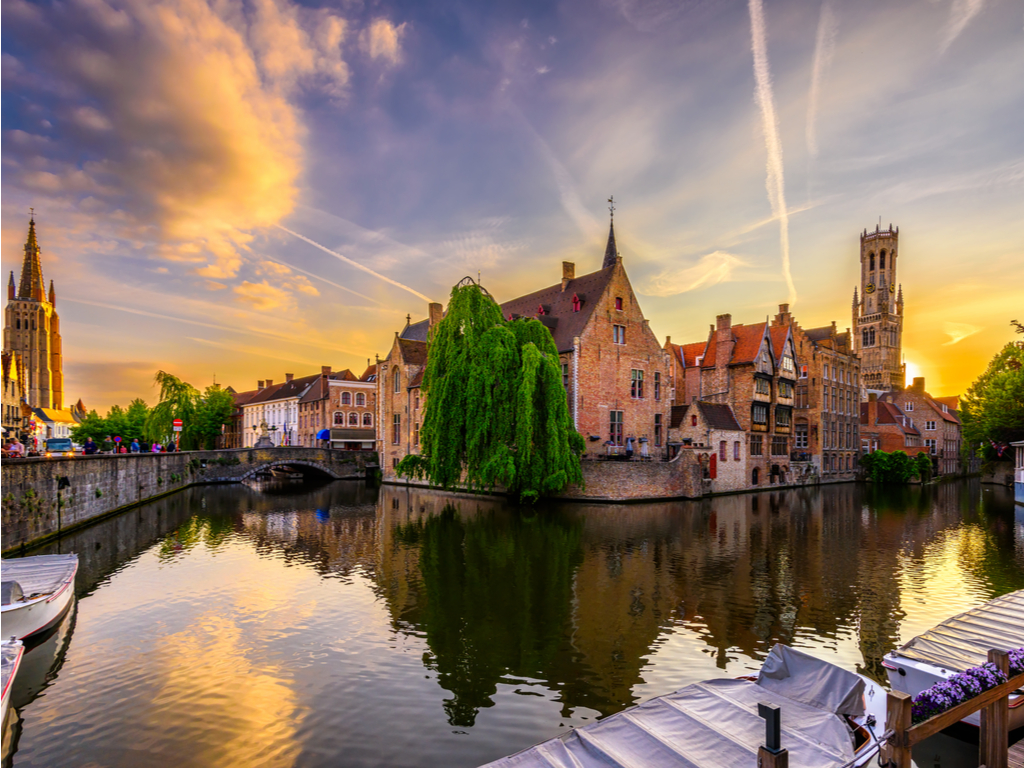
Best Time for visit Brugge
The enchanting city of Brugge, Belgium, offers a delightful experience throughout the year, with each season bringing its unique charm. To make the most of your visit and enjoy optimal sightseeing, it’s essential to choose the best time of year that aligns with your preferences and interests. In this section, we’ll explore the various seasons and their offerings, helping you decide when to plan your Brugge adventure.
Best Time of Year for Sightseeing in Brugge:
| Season | Months | Highlights | Important Dates |
|---|---|---|---|
| Spring | March-May | Mild weather, blooming flowers | Beer Festival (Feb/Mar) |
| Summer | June-August | Warm weather, lively festivals | Cactus Festival (July) |
| Autumn | September- November | Cooler temperatures, fall foliage | Art and Craft Market (Sept) |
| Winter | December- February | Crisp air, festive atmosphere | Christmas Market (Dec-Jan) |
Spring is a popular choice for visiting Brugge, as the mild weather and blooming flowers create a picturesque setting for sightseeing. The city awakens from its winter slumber, and the crowds are generally smaller than in the peak summer season.
Summer brings warm weather and numerous lively festivals, attracting many tourists to Brugge. While the city can be crowded during this time, the long days and vibrant atmosphere make it an exciting time to explore.
Autumn offers cooler temperatures and stunning fall foliage, creating a cozy ambiance for sightseeing. With fewer tourists, you can enjoy the city’s charm at a more leisurely pace.
Winter in Brugge is marked by crisp air and a festive atmosphere, especially during the holiday season. The city’s historic buildings and cobblestone streets dusted with snow create a magical setting for sightseeing and photography.
In summary, the best time of year to visit Brugge for optimal sightseeing depends on your preferences. Whether you prefer mild spring weather, lively summer festivals, cozy autumn foliage, or a festive winter atmosphere, Brugge has something to offer in every season.

Brugge’s Best Food and Drinks
In Brugge, Belgium, the culinary scene is as captivating as the city’s medieval architecture and charming canals. From traditional Belgian dishes to international cuisine, Brugge offers a wide variety of flavors for food lovers to explore.
When it comes to local cuisine, be sure to try some traditional Belgian dishes like ‘stoofvlees‘, a slow-cooked beef stew served with fries, or ‘waterzooi’, a creamy fish or chicken soup. ‘Moules-frites’, a classic dish of mussels and fries, is also a popular choice for visitors looking to savor the taste of Belgium.
You cannot visit Brugge without indulging in some of its famous sweet treats. Belgian chocolates are renowned worldwide, and there are numerous chocolate shops throughout the city where you can sample an assortment of handmade creations. Another must-try dessert is the Belgian waffle, which can be enjoyed with a variety of toppings like whipped cream, strawberries, or Nutella.
Brugge also offers a fantastic selection of beer, with a long history of brewing dating back centuries. Beer enthusiasts can sample local brews at one of the city’s many cozy pubs or visit a brewery, such as the historic De Halve Maan, to learn more about the brewing process and taste their signature beers.
The city is home to an array of dining establishments, from casual eateries and charming cafes to fine dining restaurants. Brugge’s historical center offers numerous options for sampling local dishes, while venturing off the beaten path can lead you to hidden gems serving up delicious meals in a more intimate setting.
In summary, Brugge’s culinary landscape is as diverse and delightful as the city itself. Whether you’re seeking traditional Belgian fare, sweet treats, or a refreshing beer, there’s no shortage of tasty options to satisfy your taste buds during your visit.
Traveling Sustainably and Responsibly
Visit Brugge in Belgium is a delightful experience, and being mindful of sustainable and responsible travel practices can help preserve the city’s charm for future generations. Here are some tips to ensure your visit has a positive impact on the local community and environment.
The below shows how to travel sustainably and responsibly when visiting Brugge, Belgium.
- Explore Brugge on foot or by bike to reduce your carbon footprint
- Dine at local restaurants and cafes that source ingredients from nearby farms and producers
- Choose accommodations with eco-friendly practices, such as water-saving measures or recycling programs
- Respect historic sites and natural surroundings by not littering and staying on designated paths
- Use a reusable water bottle to minimize plastic waste
- Ask for permission before taking pictures of locals and respect their privacy
- Support local businesses and artisans by purchasing souvenirs from independent shops
By following these sustainable and responsible travel practices, you can ensure your visit to Brugge not only creates lasting memories but also has a positive impact on the city and its inhabitants.
How to get Around
As a visitor, you can choose from several modes of transport to make the most of your time in this enchanting city.
Walking is one of the best ways to explore Brugge. The city’s historic center is pedestrian-friendly, with most attractions situated within a short distance of one another. As you stroll through the cobblestone streets and alleys, you’ll have the opportunity to admire medieval architecture and discover hidden gems at your own pace.
Cycling is another popular mode of transportation in Brugge. The city boasts numerous bike rental shops, making it easy for tourists to rent a bicycle for a day or their entire stay. With dedicated bike lanes and a flat terrain, cycling is not only eco-friendly but also an enjoyable way to see the sights.
For longer distances or when you’re short on time, public transportation is a reliable option. Brugge’s bus network is operated by De Lijn, with frequent services connecting various parts of the city. A day pass or multi-day pass can offer unlimited travel on the buses, making it a cost-effective choice for tourists.
Taxis are also available in Brugge, providing a convenient mode of transport for those who prefer a private ride. While taxis can be more expensive than other options, they offer door-to-door service and are especially useful for late-night journeys or when you’re carrying luggage.
| Transportation Option | Description | Costs |
|---|---|---|
| Walking | Pedestrian-friendly streets, most attractions nearby | Free |
| Cycling | Bike rental shops, dedicated bike lanes | €10-€20 per day |
| Public Bus | Operated by De Lijn, frequent services | €3 for a single ticket, €6 for a day pass, €12 for a 3-day pass |
| Taxi | Door-to-door service, available 24/7 | €10-€15 for a short ride, €2-€3 per km (varies by company) |
Brugge offers a range of transportation options for tourists, from walking and cycling to public buses and taxis. Depending on your preferences, time constraints, and itinerary, you can choose the mode of transport that best suits your needs and enjoy a seamless travel experience in this beautiful city.
How to get to Brugge
Reaching the charming city of Brugge, Belgium, is relatively easy, with several transportation options available for travelers. Depending on your starting point and preferences, you can choose from car, bus, train, or air travel to arrive in Brugge and begin your adventure.
| Nearby Cities | Distance (km/mi) | Car (duration) | Bus (duration) | Train (duration) |
|---|---|---|---|---|
| Brussels | 100 km / 62 mi | 1.5 hours | 2 hours | 1 hour |
| Ghent | 50 km / 31 mi | 0.75 hours | 1 hour | 0.5 hours |
| Antwerp | 95 km / 59 mi | 1.5 hours | 2 hours | 1.5 hours |
| Amsterdam | 250 km / 155 mi | 3 hours | 4 hours | 3.5 hours |
| Paris | 300 km / 186 mi | 4 hours | 5 hours | 2.5 hours |
For those who prefer driving, Brugge is well-connected by road to nearby cities such as Brussels, Ghent, and Antwerp. Car rental services are available at airports and city centers, making it convenient for travelers to rent a vehicle and drive to Brugge at their own pace.
Bus services, such as FlixBus and Eurolines, connect Brugge with major cities in Belgium and neighboring countries. The Brugge bus station is conveniently located near the city center, making it easy to transfer to your accommodations upon arrival.
Train travel is another popular option, with Belgian Rail and other international rail operators providing frequent connections to Brugge from various cities in Belgium, as well as Paris, London, and Amsterdam. Brugge’s train station is located just outside the city center, with local buses and taxis available for onward travel.
For those arriving by air, Brussels Airport is the closest international airport to Brugge. Upon landing, you can take a train from the airport directly to Brugge or transfer to Brussels’ main train station for more frequent connections.
In summary, getting to Brugge is straightforward, with multiple transportation options available to suit different preferences and budgets. Whether you choose to drive, take a bus or train, or fly into Brussels Airport, you can easily reach Brugge and begin exploring its enchanting streets and canals.


